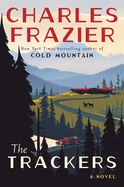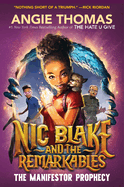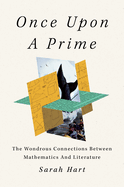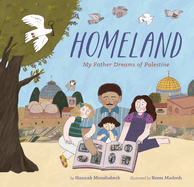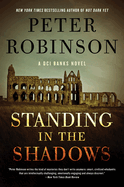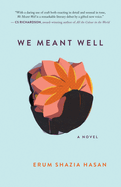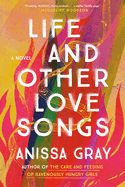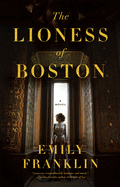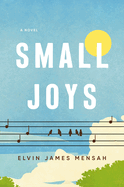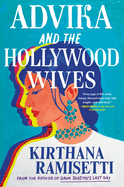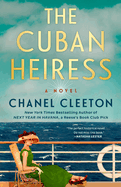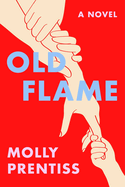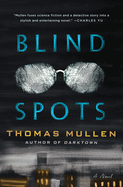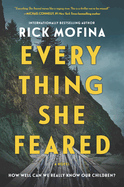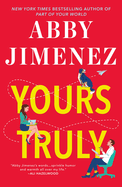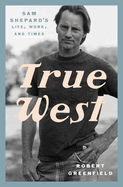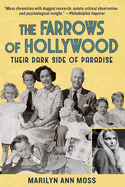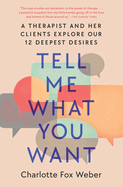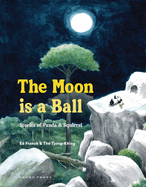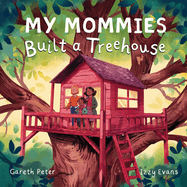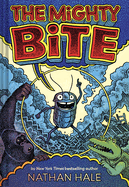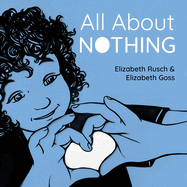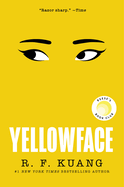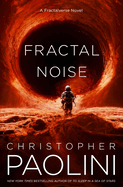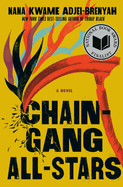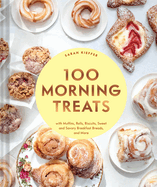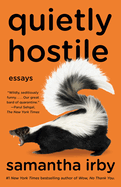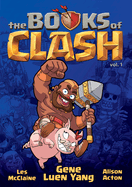Friday, April 14, 2023
To get ready for Earth Day on April 22, our feature highlights books that take young people into nature--both close to home and far away--and shows them the world in need of saving. We also review Katie Holten's excellent ode to the planet and its varied microclimates, The Language of Trees, in which she invents "a custom-made arboreal alphabet consisting of hand-drawn trees."
And we have plenty of other reviews, too, including Charles Frazier's The Trackers, which "chronicles the landscape of Depression-era America" as a young WPA artist traverses the country on "a trek of intrigue and danger."
The Trackers
by Charles Frazier
At the center of the post office mural in Dawes, Wyo., artist Val Welch paints three "trackers," two Crow guides and a white explorer, symbolizing when "everything changed except landscape and weather." Charles Frazier (Cold Mountain; Varina) deftly paints a narrative of another change in The Trackers, chronicling the landscape of Depression-era America as Val himself traverses the country, unexpectedly becoming both tracker and tracked.
In 1937, Val's commission is part of the New Deal's WPA jobs program, a lucky break for the 27-year-old. A bonus is the offer from "rich art-lover" John Long and his enigmatic younger wife, Eve, to live at their ranch. As they share the lifestyle John's inheritance provides, Val ponders the couple's dichotomy: John has political ambitions, and Eve was a penniless itinerant before touring as a singer in western bands. Fascinated, Val also has "a feeling of something unsettled, something wrong."
When Eve disappears, John hires Val to find her, financing a search to "all four corners of the country." Eve's sketchy history draws Val into a trek of intrigue and danger, which includes Seattle Hoovervilles and Florida swampland. As he pursues Eve, he knows he's being followed. Solving the mysteries of why John is determined to find Eve and what she's fleeing leads the surprisingly wise painter into the worlds of colorful characters--Old-West cowboys, noir-ish urban squatters and small-town Americans. The Trackers is a fast-paced story with vivid images of both the landscape and society of 1930s America. --Cheryl McKeon, Book House of Stuyvesant Plaza, Albany, N.Y.
Discover: A New Deal artist's commission to paint a Wyoming post office mural leads to a more dangerous assignment--pursing a missing woman--in this fast-paced novel that crisscrosses Depression-era America.
I Could Live Here Forever
by Hanna Halperin
Somewhere between Fatal Attraction and what narrator Leah Kempler calls "some beautiful love story" sits I Could Live Here Forever, Hanna Halperin's smoldering, troubling and indelible second novel, following Something Wild. Although fraught love is a commonplace subject in fiction, Halperin's sophomore effort has staked out fresh territory with a relationship that feels sui generis.
Leah is a 25-year-old Boston transplant, halfway into a two-year MFA program in fiction writing at the University of Wisconsin, when she meets Charlie Nelson at a grocery store. Charlie is a 31-year-old Madison native, a construction worker, and a recovering heroin addict who tells Leah that he's three years clean. I Could Live Here Forever is Leah's account of "the strangeness that was Charlieland," but the novel is no cautionary tale. Though Charlie is never violent or cruel, he can be terrifying, and yet most readers won't find themselves judging Leah too harshly for tolerating his unpredictability. Halperin, through Leah, is persuasive regarding Charlie's appeal: there's his lovely face, yes, but also his sweetness, humility, and determination to stay clean.
Leah's sometimes-dubious judgment isn't incompatible with self-awareness. As she puts it when she finally meets with a therapist: "She was going to try to get me to see how the damage from my childhood had driven me into Charlie's arms. It was all a bit insulting--both to me, and to Charlie.... What if I loved Charlie simply because he was Charlie?" Readers who travel to Charlieland may wonder the same. --Nell Beram, author and freelance writer
Discover: Hanna Halperin's second novel, about an MFA student's romance with a recovering drug addict, is smoldering, troubling, and indelible.
We Meant Well
by Erum Shazia Hasan
Canadian author Erum Shazia Hasan explores the complex moral and ethical quandaries facing a humanitarian aid worker in her powerful debut novel, We Meant Well. The setting is Likanni, a village in an unnamed country, a former French colony characterized by lush beauty, poverty, and war, and the narrator is Maya, a 30-something from Los Angeles who works for an international charitable organization based in Geneva, one that is recognizable by its "fancy blue logo." She was adopted as an infant from Bangladesh by a wealthy American couple, and grew up a white girl trapped in a brown body with no understanding of her heritage and roots. A woman with immense empathy, she chafes at the severely restricted donor-friendly scope of her job, which is simply to focus on running the charity's orphanage and not concern herself with underlying problems plaguing the village.
Maya oversees operations in Likanni from her luxury perch in the Hollywood Hills until she is summoned to the village by her superiors to investigate a rape allegation against one of her colleagues, Marc. Protestors surround the charity's office, demanding justice. A public relations fiasco would affect donations to the organization, and Maya is instructed to "be responsive to the aggrieved beneficiaries while protecting the brand."
Readers may question Maya's choices as she tries to untangle the truth of what happened, while facing bureaucratic pressure to evacuate Marc and quickly resolve the crisis. Hasan tantalizes readers: she opts not for a neat and tidy ending, but instead positions her characters for a destiny-defining reckoning beyond the page. --Shahina Piyarali, reviewer
Discover: A humanitarian aid worker at an international charity is faced with an impossible choice when one of her colleagues is accused of rape by a village chief's daughter.
Life and Other Love Songs
by Anissa Gray
Anissa Gray takes readers deep into the complicated, loving life of a Black family in her absorbing second novel, Life and Other Love Songs. Gray's narrative follows the ups and downs of Deborah and Daniel Ozro "Oz" Armstead and the consequences of Oz's sudden disappearance in 1981. Gray (The Care and Feeding of Ravenously Hungry Girls) opens her novel in 1989, as Deborah finally hosts a funeral for Oz. Their daughter, Trinity, now in her 20s, still struggles to understand how her father could have left them. Gray shifts her narrative backward and forward in time from the perspective of mother and daughter, from Oz and Deborah's courtship in 1960s Detroit to their eventual move to the suburbs and parenthood. When Oz disappears, Deborah and Trinity must learn to deal with their grief and disappointment--and the deep wounds that Oz could never quite escape.
Gray explores her characters' inner worlds with compassion, weaving their experiences with the issues of the day: race riots and white flight, the Vietnam War, Trinity's experience growing up as the only Black girl in her neighborhood. Gradually, Gray peels back the layers of Oz's trauma and its effects on him and his family. The Armsteads cannot forget what they've suffered but eventually, in their own ways, learn that forgiveness is possible. With gripping storytelling and complex, vivid characters, Gray's second novel is both a family saga and a thoughtful exploration of loss and loyalty, guilt and love. --Katie Noah Gibson, blogger at Cakes, Tea and Dreams
Discover: Anissa Gray's absorbing second novel offers an intimate look at the pain and love of a Black family in Detroit.
The Lioness of Boston
by Emily Franklin
Emily Franklin (Tell Me How You Got Here) brings iconoclast and art collector Isabella Stewart Gardner to sparkling life in her third novel for adults, The Lioness of Boston. In a first-person narrative, Gardner divulges her experiences as a newlywed Boston socialite; her disappointment in friendship and motherhood; and the grand opening of her museum, Fenway Court, which displays both her inimitable taste and her vast collection of treasures. Clever and restless, Gardner comes to Boston determined to become a successful society wife and mother. But her quirky tastes, from blue satin boots to speaking her mind, do not endear her to Boston's elite, and her struggles to bear a child cause her much grief. Franklin sensitively explores the push and pull between Gardner's thirst for intellectual company and her desire to be accepted by the matrons who snub her. Even her two loving sisters-in-law do not understand her, so Gardner seeks the company of writers, artists, and intellectuals like herself.
Franklin vividly describes Boston's Back Bay and the contrast between its rigid social mores and thriving intellectual life. She details Gardner's loving but complicated marriage and her travels through Europe, where she falls in love with art collecting. She also recounts Gardner's deep love for her three nephews, whom she raises after their parents die. While Franklin includes some of Gardner's newsworthy exploits, such as walking a pair of lions through the streets of Boston, the author ultimately paints a rich, nuanced portrait of a woman hungry to find beauty, knowledge, and her own place in the world. --Katie Noah Gibson, blogger at Cakes, Tea and Dreams
Discover: Emily Franklin brings art collector Isabella Stewart Gardner to sparkling life in her richly layered third novel for adults.
Small Joys
by Elvin James Mensah
The lovingly bickering, bantering cast of Small Joys calls to mind a British Friends if the show's characters weren't entirely straight and white. With a nimble touch and arch humor, first-time novelist Elvin James Mensah captures the quintessence of friendship: its surrogacy for family, its allowance for self-absorption, and its elastic capacity for forgiveness. Narrator Harley Sekyere, who is 21, Black and gay, was so overcome by anxiety at university that he dropped out and returned to Dartford. As the novel opens, he's in the woods near his flat and holding an X-Acto knife when a stranger interrupts his suicidal thoughts. Twenty-three-year-old Muddy Barlow is, it turns out, Harley's new flatmate. Unlike Harley, Muddy is white, apparently happy and apparently straight: he used to date their mutual friend Chelsea. This won't be the last time Muddy rescues Harley; his unflagging loyalty soon becomes clear. What's fuzzy is whether the two young men want the same things from each other--and, anyway, do they even know what those things are?
Mensah is keenly attuned to the expectations of new adults; as Harley puts it, "I'd staked so many of my future glories on my twenties signaling something.... I'd made it, I'd say." But Harley isn't the only one who's not quite making it, and the wisecracking, foulmouthed conversations within his friendship cluster burble over with salubrious understanding. A gentle novel about a hard time, Small Joys delivers exactly what's promised by its title. --Nell Beram, author and freelance writer
Discover: This debut novel, centered on a depressed young, Black, gay Brit and his lovingly bickering, bantering friends, delivers exactly what's promised by its title.
Advika and the Hollywood Wives
by Kirthana Ramisetti
A Hollywood fairy-tale romance hews closer to Bluebeard than Cinderella in Advika and the Hollywood Wives, a vivid, engrossing drama by Kirthana Ramisetti (Dava Shastri's Last Day). The closest that aspiring screenwriter Advika has come to stardom in Hollywood is bartending at major awards shows. Her latest gig is an Oscars after-party where she meets renowned, powerful film producer Julian Zelding, fresh off his latest Oscar win. Julian is charming, "Paul Newman-as-elder-statesman hot" and 41 years Advika's senior. Advika is wowed by his attention, lavish gifts, and luxury lifestyle. Julian soothes the loneliness left by the recent accidental death of her twin sister. Advika ignores red flags and marries Julian, despite the hesitation of friends and family. Then Julian's first wife, an actress who divorced him decades ago, dies. She wills "Julian's latest child bride" $1 million and a mysterious film reel on one condition: she must divorce him. This inheritance from a complete stranger throws Advika off balance and sends her on a journey to discover the truth about each of Julian's previous wives--the actress, the singer, and the reality star. Meanwhile, Julian's behavior takes a dark turn. If Advika is to escape, she'll have to rediscover a long-silenced voice: her own.
Ramisetti juxtaposes the glitz and glamour of Hollywood against its underbelly of power imbalances, racism and the consumption of young hopefuls, especially women. Deep, thoughtful characterization of Advika and the former wives brings extra heft to a complex story of wish fulfillment gone wrong. --Jaclyn Fulwood, blogger at Infinite Reads
Discover: The results are grim when a struggling screenwriter marries a wealthy producer in this complex, intimate status drama.
The Cuban Heiress
by Chanel Cleeton
Chanel Cleeton's sixth historical novel, The Cuban Heiress, weaves the stories of two women seeking revenge on a 1934 luxury cruise aboard the SS Morro Castle. Cleeton (Our Last Days in Barcelona; When We Left Cuba; Next Year in Havana) takes readers aboard the elegant ship and into the streets of Depression-era Havana as her protagonists, Elena and Catherine, plot to bring down the men who have wronged them. Cuban-born Elena (the titular heiress) has been presumed dead since a fire at her New York City mansion. Catherine, who is really an Irish American maid known as Katie, poses as an heiress, presumably to marry a wealthy financier. But a handsome jewel thief who seems to see right through her (not to mention her fake baubles) rattles Katie's composure, and a series of unsettling events aboard the ship threatens Elena's carefully laid plans. As the ship (possibly carrying contraband weapons along with its wealthy clientele) makes its way from New York to Havana and back again, both women must adapt to quickly shifting circumstances to score their vengeance and escape with their lives.
Cleeton's gift for lush historical detail, including gowns, weaponry, and architecture, is on display here, though her characters feel a little thin. Nevertheless, the page-turning plot and tangled relationships are more than enough to engage readers. The ship's eventual fate, while tied to that of both women, also makes for interesting further reading. Fans of Cleeton's series about the Perez sisters will find much to enjoy in this captivating standalone. --Katie Noah Gibson, blogger at Cakes, Tea and Dreams
Discover: Chanel Cleeton's compelling sixth historical novel takes readers on a Depression-era luxury cruise with two women seeking revenge.
Old Flame
by Molly Prentiss
Following Tuesday Nights in 1980, Molly Prentiss presents another ambitious and brilliant novel. Old Flame stars a young woman seeking connection in busy New York City and picturesque Bologna, while wrestling with its many permutations.
Emily is performing a life. She's about 30 years old, has graduated from bartending to a "real job" writing advertising copy for an iconic department store. She steals time at work to read poems and even do a little writing. She also feels the absence of her mother, who died in childbirth, and the shortcomings of her rigid, distant adoptive mother.
As the novel opens, Emily's creative department is finalizing the Women's Book, a biannual catalogue, and Emily is moving from just-work-friends to real-friends status with Megan, a graphic designer. More or less spontaneously, they travel together to Italy, where Emily spent an important year abroad when she was about 20. And in Italy, an unplanned pregnancy and a devastating fight with Megan shatter Emily's tenuously structured life.
Old Flame considers the particular challenges of being a young artist in New York, balancing the kind of work that pays ("the magnet was capitalism, but I couldn't see that then") with the kind that inspires. It considers feminism and appearances. Prentiss is a master of detailed descriptions, character studies, highly specific lists and meaningful settings. She offers a sensitive story about what it means to seek and shape connection in the modern world. Filled with both snark and wisdom, this novel is a gift of love and forgiveness. --Julia Kastner, librarian and blogger at pagesofjulia
Discover: A young woman explores and redefines her roles as advertising copywriter, creative writer, friend, daughter, lover, partner, and mother in this exquisitely detailed rendering.
Mystery & Thriller
Standing in the Shadows
by Peter Robinson
Standing in the Shadows, the 28th mystery centered on Yorkshire detective (now detective superintendent) Alan Banks, is a work of expert craftsmanship and consuming moral inquiry. With the October 2022 death of Peter Robinson, the novel presumably marks the end of the series. But Robinson couldn't have given Banks a better send-off: Standing in the Shadows presents the bon vivant sleuth at his intellectually nimble best.
Robinson rolls out two narratives. The novel begins in 1980 with a first-person account by university student Nick Hartley; two cops confront him at his bedsit. After one officer searches the place, they give him the news that his ex-girlfriend has been found dead, and Nick gathers that he's a suspect. Nick's narration alternates with sections from the perspective of Banks, or occasionally a colleague, taking place in 2019, when a skeleton is unearthed on disused farmland during an archeological dig. Readers are hard put to make the connection between the two narrative threads, but their ultimate lacing-together is a beautiful bit of latticework.
As in previous novels by Banks (Watching the Dark; Before the Poison), the police work is a group effort. (Note to fans of the series: Banks's sometimes-inamorata, DI Annie Cabbot, has lost a loved one and is sitting this one out.) But Standing in the Shadows finds the seasoned detective frequently enjoying his own company at home, and Robinson leaves him in a reassuringly good headspace: "He had given up worrying about his future. It would be what it would be." --Nell Beram, author and freelance writer
Discover: The expertly crafted 28th Detective Banks mystery rolls out two ultimately twined narratives--one involving a young woman's murder; the other, the unearthing of a male skeleton.
You Know Her
by Meagan Jennett
Two women in a small Virginia town deal with misogynistic men differently in Meagan Jennett's vicious and complicated thriller, You Know Her. One, a cop, tries to put them behind bars whenever possible; the other fixes the world by killing them. Bartender Sophie Braam warns a guy she'll kill him if he doesn't stop trying to grope her. It's not her fault he doesn't take her seriously. Neither does the next guy, who meets the same fate as the first. Sophie becomes hellbent on ridding the world of men who don't take no for an answer.
Fed up with a lack of advancement and with male colleagues calling her "sweetheart" at her former place of work, Officer Nora Martin is newly arrived in the Virginia town on the promise of making detective as soon her mentor, a detective named Murph, retires. She quickly gains a friend in Sophie. But a different police station and new community don't change the fact that Nora's a woman. Long work hours followed by unpaid detective training wear her down. Her situation might improve if she can help solve a string of local murders. Though Murph disagrees, Nora thinks the killings are connected and are being committed by a woman, given that the victims are male and have their tongues cut out. After all, both Nora and Sophie can understand telling men to shut up.
Early in Jennett's dark and brilliant first novel, an expletive-laden rant from one character's perspective makes a frighteningly convincing case for murdering men. You Know Her should make for lively discussions among readers of all genders. --Paul Dinh-McCrillis, freelance reviewer
Discover: In this wicked thriller, misogyny in a small Virginia town drives a female bartender to murder, while her best friend, a female cop, tries to stop the string of killings.
Blind Spots
by Thomas Mullen
How a pandemic changes the world's culture and individuals--something all readers have experienced during the past couple of years--infuses Blind Spots, Thomas Mullen's fascinating piece of speculative fiction. Mullen's seventh novel centers on a global epidemic. It finally eases up after seven years, during which time everyone in the world was blinded in the span of a few months. "The Blinding" eroded trust among everyone, created chaos as people scrambled for food and resources, and made policing almost impossible. Then technology caught up to the catastrophe with vidders, small metal discs implanted in most people to send visual data to their brains. Vidders make police work more manageable, but homicide detective Mark Owens's latest case perplexes him and his team, who patrol an unnamed American city. A shooter--who found a way to be invisible to the only witness's vidder--murders research scientist Ray Jensen. Mark doubts the witness's account until a similar murder happens in front of him. Any technology can be hacked, but this has dire consequences for mankind.
Blind Spots illustrates the major dilemmas of society and the minute details of daily life that arise when the world is blind. Without sight, the other senses increase--but not always for the better. The vidders allow data to come straight to one's brain but also give the government access to thoughts and actions as people trade privacy for sight. Mullen (Darktown; The Revisionists) creates a complete world in crisis, superbly mixing a solid police procedural with a bleak futuristic novel that is frighteningly realistic. --Oline H. Cogdill, freelance reviewer
Discover: Blinds Spots is a frighteningly realistic thriller set after a global epidemic during which everyone in the world was blinded in the span of a few months.
Everything She Feared
by Rick Mofina
During a youth center outing to a Washington State park, popular 17-year-old Anna Shaw falls from a cliff while trying to take a selfie. The only witness, who immediately runs for help, is nine-year-old Katie Harmon, for whom Anna regularly babysat. Such is the gripping opening to Everything She Feared, Rick Mofina's 31st novel.
Although the scenario appears to be an unfortunate tragedy, rookie detective Kim Pierce disagrees with her older, all-male colleagues who want to quickly rule the death an accident. Kim wonders if Katie's evasiveness is because she's a scared little girl who saw her baby-sitter fall--or if she pushed Anna. Part of Kim's doggedness is spurred by the desire to show she has the skills to lead the investigation and to prove to her colleagues that her youth, gender, and Guatemalan and Native American heritage have nothing to do with her being a good detective. Katie's mother, Sara, worries that Kim might uncover a dark family secret, affecting her relationship with her daughter and skewing the investigation. Intersecting subplots focusing on true-crime podcasters and a man searching for his long-lost sister add to the tension.
Mofina (Her Last Goodbye; Search for Her; Their Last Secret) delivers an intriguing story about whether nature or nurture determines behavior. Although Everything She Feared occasionally becomes repetitive, the author smoothly alternates timelines and points of view to place each present action in the context of the past. Mofina's skill at presenting complete character studies compels readers to feel invested in each person on the page.--Oline H. Cogdill, freelance reviewer
Discover: A rookie detective's investigation into what seems to be a teen's accidental death jump-starts a gripping plot that delves into whether nature or nurture determines behavior.
Romance
Yours Truly
by Abby Jimenez
With Yours Truly, Abby Jimenez (Part of Your World; The Happy Ever After Playlist) continues her string of lovable romances that deftly handle issues of mental and physical illness. Dr. Briana Ortiz has had a truly terrible year: her divorce has just been finalized, her younger brother is going through kidney failure, and she finds out that the work promotion she's been vying for is probably going to the new kid on the block, Dr. Jacob Maddox. Determined to hate him, Briana is eager to find all of Jacob's flaws (and commiserate about him with other hospital staffers), until, to her shock, Jacob writes her an honest-to-god letter. And it's a great letter, which makes Briana see Jacob in a new light and forces her to reevaluate her first impressions of him. Soon she finds herself falling for Jacob, as she realizes what a truly special person he is underneath the quirks that, at first, she hated.
Yours Truly, introspective and charming, is the story of two people with misconceptions about each other, yet who are willing to look for the best and change their opinions. Fans of Jasmine Guillory or Emily Henry are sure to love this one. Yours Truly includes some crossover characters from Part of Your World but can easily be read as a scintillating stand-alone novel for those who haven't read Jimenez before--although it's sure to send readers scrambling to find all of her previous novels, too. --Jessica Howard, freelance book reviewer
Discover: In this poignant romance, two clashing doctors realize their misconceptions about each other.
Biography & Memoir
True West: Sam Shepard's Life, Work, and Times
by Robert Greenfield
He had "one of the most extraordinary careers in modern American theater," as Robert Greenfield (Bear; The Last Sultan) puts it in True West, the admirably nonhagiographic biography of playwright and actor Sam Shepard (1943-2017). Born in Illinois to an Army Air Force First Lieutenant father and a teacher mother, Shepard spent his formative years in California and was so naive that, when he arrived in New York to forge a career in the arts, he thought "the girls in New York City must be incredibly friendly, because they all keep hitting on him." That innocent would appear in many successful films and write some of the most acclaimed plays of the 20th century, including Fool for Love, A Lie of the Mind, and Buried Child, the last of which received the 1979 Pulitzer Prize in Drama.
Greenfield's book is a standard linear biography that hits the usual notes: upbringing, rise to fame, relationships, inevitable decline, and so on, plus reminiscences from those who knew him. He doesn't sugarcoat Shepard's flaws, which included "drinking & bad behavior," brushes with the law, and infidelity. His relationships included not just his marriage but also his romances with Patti Smith and, more enduringly, with Jessica Lange. The bio may be traditionally structured, but it's a story worth telling, and Greenfield tells it well. Who wouldn't be interested in a biography in which the author has the wit to compare one of the subject's plays to "a weird, post-apocalyptic episode of Friends"? --Michael Magras, freelance book reviewer
Discover: Author Robert Greenfield writes an admirably even-handed biography of Sam Shepard, one of the most acclaimed American dramatists of the 20th century.
The Farrows of Hollywood: Their Dark Side of Paradise
by Marilyn Ann Moss
The Farrows of Hollywood opens in 1992 with Mia Farrow finding smiling nude photos of her adopted 19-year-old daughter in current boyfriend Woody Allen's apartment. Six months later, Farrow accused Allen of molesting the seven-year-old daughter they co-adopted. Allen denied all allegations. The case was investigated repeatedly over the next three decades and no evidence of a crime was found; Allen was never charged. Marilyn Ann Moss (Raoul Walsh) then backtracks to the volatile household Farrow grew up in as the daughter of film director John Farrow and actress Maureen O'Sullivan, who both understood that "you could find fiction to make real life bearable."
Moss describes the home Mia and her six siblings grew up in as "a tense, rigid, tightly wound and religiously bound environment where the children hardly saw their parents." John Farrow's numerous affairs led to separate bedrooms and separate lives. "Maureen loved having children," writes Moss, "but after giving birth she had absolutely no idea what to do with them." Mia, who would later have four biological children and adopt 10 more, remembers her father drunkenly chasing her mother with a long knife before running off into the night. Her mother's response was to put young Mia in her bed and go sleep elsewhere.
Moss expertly sifts through the Farrow family's struggles and tragedies: one of Mia's brothers and two of her adopted children died by suicide, and another brother was imprisoned for molesting two boys and later claimed he was molested by their father. This is a deeply researched, attention-grabbing and previously untold tale of generations of dysfunction in one Hollywood family. --Kevin Howell, independent reviewer and marketing consultant
Discover: The Farrows of Hollywood is an eye-opening, well-researched exploration of generations of family dysfunction in one Hollywood family.
History
The Blazing World: A New History of Revolutionary England, 1603-1689
by Jonathan Healey
The political, religious, and social revolutions that raged across England in the 17th century still cast a smoldering glow upon today, claims historian Jonathan Healey in his superb study The Blazing World. In 1603, England was a land of (mostly) illiterate and poor farmers staving off starvation under the unchecked rule of a Scotsman, King James I. A "new world had arisen" by the century's end, one characterized by economic growth, higher literacy rates and wages, increased religious tolerance, and a robust parliamentary government. In between those bookends, says Healy, it was a story of "grubby politics," where "[p]opular petitioning, iconoclasm and mass protests" were a constant feature in a society roiled by civil war, army coups, religious dissent, and regicide. Healey's (The First Century of Welfare) erudition illuminates the clash of ideologies pitting Roundheads vs. Cavaliers in the English Civil War, King Charles I's sensational trial and execution at the hands of Parliament, Oliver Cromwell's Protectorate and the Glorious Revolution of 1688-9, to name just a few of the century's top notes.
But it is in the interstices where the "middling sort" of English society emerges in "vivid technicolour" through Healey's careful curation of ample source material. Healey admits there is "so much that is alien" about the 17th century, but the ways in which society grappled with "new forms of media, with a divisive culture war and with questions about who holds power" resonate today. The Blazing World achieves that rare balance between readability and incandescent scholarship. --Peggy Kurkowski, book reviewer and copywriter in Denver
Discover: Revolutionary England (1603-1689) gets a sharp look in this ambitious one-volume history that connects similar profile points of "revolution" and transformational change in the modern world.
Essays & Criticism
Once Upon a Prime: The Wondrous Connections Between Mathematics and Literature
by Sarah Hart
Since 2020, Sarah Hart has served as the Gresham Professor of Geometry; she's only the 33rd person--and the first woman--to hold the post since its origins in Tudor England. She's also an avid lover of books, and in Once Upon a Prime: The Wondrous Connections Between Mathematics and Literature, she sets out to show just how much her twin passions have in common. It's an affable guide to numerous mathematical concepts and to illuminating close readings, and Hart's good-natured enthusiasm for both books and numbers is sure to set even the most math-shy readers at ease. That enthusiasm is contagious. Joy abounds as she digs into the mathematical structure that undergirds Eleanor Catton's The Luminaries or the trove of geometric metaphors to be found in Moby-Dick.
Catton and Melville are but two highlights among the bevy of literary personalities and references Hart cites in her survey. Another delightful feature is Hart's affection for a cadre of mid-20th-century French theorists collectively called the Oulipo, to whom she devotes a chapter. It's easy to see why Hart is so taken with the Oulipians, whose roster featured such notable members as Italo Calvino and Marcel Duchamp; identifying mathematics "as the lodestone of structure," they used it to invent new and often highly conceptual literary forms with a spirit of playfulness and imagination. That mathematics can be such a wellspring of inspiration--and, in the case of literature, often inseparable from artistic creation itself--is a case that Hart's debut makes with undeniable warmth and exuberance. --Theo Henderson, bookseller at Ravenna Third Place Books in Seattle, Wash.
Discover: In this upbeat, accessible survey of math in literature, Sarah Hart, an esteemed British professor, illuminates the surprising role of mathematics in a bevy of great books.
Psychology & Self-Help
Tell Me What You Want: A Therapist and Her Clients Explore Our 12 Deepest Desires
by Charlotte Fox Weber
In her first book, Tell Me What You Want: A Therapist and Her Clients Explore Our 12 Deepest Desires, Charlotte Fox Weber delves headfirst into what she describes as the central mission of therapy: to uncover hidden longings and the deep desires that frighten and excite us. This includes desire in the sexual sense, as well as a yearning for love, understanding, attention, connection, and belonging. Weber is a London-based psychotherapist and the founder of the School of Life psychotherapy service. In Tell Me What You Want, she grants readers access to intimate conversations that unfold between her and her clients as they explore deep, often subconscious, wants and find ways to clarify priorities that will lead to healing, growth, calmness, and self-understanding. Client names and other identifying details have been changed to maintain confidentiality, but the difficult discoveries, hard-won insights and remarkable revelations that occur in productive therapy sessions are as viscerally real as it gets.
"Cultivating a healthy sense of self requires constant fine-tuning and updating," writes Weber in a chapter titled "Understanding." Here she and her client Sying, an architect and mother with an obsessive work style and low self-esteem, untangle the emotional layers of her personality to uncover long-ago dreams and ambitions. Working toward a resolution involves Sying breaking free of an unhealthy office dynamic while making space for her desire for professional recognition.
Tell Me What You Want offers readers client-approved strategies to fathom, interrogate, and accept innermost wants and longings as a springboard for personal growth. --Shahina Piyarali, reviewer
Discover: Psychotherapy tools and real-life client stories offer strategies for harnessing innermost desires and wants as a springboard for personal growth.
Art & Photography
The Language of Trees: A Rewilding of Literature and Landscape
by Katie Holten
Irish artist Katie Holten has "always felt like a plant-person, moss and lichen covered." In a stunning new anthology, The Language of Trees, Holten collects essays, poetry, and aphorisms on trees from roughly 70 contributors, ancient and modern, and translates them into her Trees font, a custom-made arboreal alphabet consisting of hand-drawn trees. The result is a thoughtful, wide-ranging celebration of trees and forests and an urgent call to preserve and bolster them before it is too late.
Ross Gay, in his introduction, calls Holten's collection a "gratitude immense"--for its "gathering of wonderers and lovers of the arboreal," and Holten's Trees font, which appears letter by letter above some shorter quotes and as a dense, multispecies forest accompanying longer essays and other prose. Holten's contributors--a diverse group in race, gender, and nationality--include climate scientists (Robin Wall Kimmerer, Eduardo Kohn), activists (Winona LaDuke, Kinari Webb), poets (Ada Limón, Sumana Roy), and novelists (Richard Powers, Amitav Ghosh, Ursula K. Le Guin). Their pieces include essays on botany and forestry; a recipe for acorn bread; an excerpt from Robert Macfarlane's dictionary of place-words; even song lyrics from Radiohead. They are eloquent, wry, heartrending, multifaceted, and insistent, united in their deep love for trees and their passion for sustaining the world's forests. As Holten says in her afterword, this collection is "a love letter to our vanishing world, written with Trees." It's also a beautiful, artistic rendering of the many ways trees nourish and undergird our world. --Katie Noah Gibson, blogger at Cakes, Tea and Dreams
Discover: Katie Holten applies her tree alphabet to a wide-ranging collection of essays and poetry celebrating the arboreal.
Children's & Young Adult
Nic Blake and the Remarkables: The Manifestor Prophecy
by Angie Thomas
Angie Thomas's first middle-grade title, Nic Blake and the Remarkables, is the stupendous story of a supernatural Black girl who must embark upon a dangerous mission.
Nichole (Nic) Blake has just turned 12, which means her father, Maxwell, will finally teach her how to use the Gift. Nic and Maxwell are Remarkables, Black magical beings like Rougarous, Vampires, Giants, Fairies, and Merfolk--not to be confused with witches or wizards. More specifically, Nic and Maxwell are Manifestors, "some of the most powerful Remarkables there are." When Nic's favorite author, TJ Retro, comes to town, she is amazed to learn he is also a Manifestor--he and Maxwell were once best friends and Retro's books are based on their childhoods. Soon after Retro arrives, a slew of unbelievable events occurs and grim revelations emerge: Nic's father is arrested, and she learns she has a long-lost twin brother. With the help of Unremarkable best friend JP and her newly found brother, Alex, Nic commences a dangerous quest to recover an ancient magical relic that will prove her father's innocence.
Thomas uses African and African American folklore to create a magical Afro-centric world. The author has developed a society that exists simultaneously with ours, defined by magical structures and futuristic technology, which gives her space to interrogate topics that include racism, discrimination, slavery, and social justice. She thoughtfully tackles these issues in short, accessible chapters that are approachable for younger middle-grade readers while also relatable and thought-provoking for older kids. Nic Blake and the Remarkables is an adventurous, funny, and fast-paced first installment in what will surely be an exciting trilogy. --Natasha Harris, freelance reviewer
Discover: Angie Thomas's first middle-grade title is the stupendous story of a supernatural Black girl who must embark upon a dangerous mission.
Homeland: My Father Dreams of Palestine
by Hannah Moushabeck, illus. by Reem Madooh
A father shares his memories of Palestine with his children in this heartwarming autobiographical picture book debut by second-generation Palestinian American Hannah Moushabeck and Kuwaiti illustrator Reem Madooh.
In Homeland, three sisters eagerly await their father's return home for bedtime. He tells them stories of summer visits to the Old City of Jerusalem where he would stay with his grandparents, Teta Maria and Sido Abu Michel. Father recalls accompanying his "stern-looking, tarboosh-wearing" Sido (who was also the town leader, al-Mukhtar) on a walk to the family café. As they walk, they greet neighbors and friends and hear the "chanting of the muezzin's call to prayer mixed with the ringing of church bells." At story's end, the children learn that this is an account of the last time their father saw his grandfather and Palestine. The girls' father shows them "the large rusted old key to our family's home in Jerusalem," and the sisters whisper "hope of return."
Moushabeck skillfully immerses readers in the scents, sensations, and melodies of daily life in Palestine, mirroring the sense of belonging the girls feel for a beloved homeland they have never visited. Debut illustrator Madooh's lively art focuses on details that capture the rich diversity of the vibrant, multilingual, and multireligious neighborhood as well as the family's pride in their Palestinian identity: a multitude of cultural details and artifacts are displayed in their home, such as the oud (lute), tabla (drum), and kaffiyeh (square scarf). Moushabeck's text combined with Madooh's illustrations thoughtfully showcase dignity, joy, and resistance along with profound senses of loss and love of community. --Hadeal Salamah, blogger, librarian, freelance reviewer
Discover: A father shares his memories of Palestine with his children in this heartwarming autobiographical picture book debut.
The Moon Is a Ball: Stories of Panda and Squirrel
by Ed Franck, illus. by Thé Tjong-Khing, transl. by David Colmer
Two kind and curious friends grumble, tease, play, and philosophize in The Moon Is a Ball, a lovely illustrated early chapter book by internationally renowned children's book creators Ed Franck and Thé Tjong-Khing (The Birthday Cake Mystery).
Panda and Squirrel bicker over their game of acorns, attempt a long journey that ends up being a "journey of about two steps," and ponder the big and small questions of the universe, like "where the sun goes to sleep" and why fish don't need to breathe. In the opening story, Squirrel offers to pluck the moon from the sky for Panda because "friends do all kinds of things for each other." Things go quickly and comically awry, but the adventure ends with hugs and a "quiet song about the moon."
Some of the nuances of each protagonist's personality may have been lost in translation from Dutch, but the warm connection between Panda and Squirrel is evident. Nine short, linked stories should hold the interest of emerging readers, especially when children linger--as they almost certainly will--on the gorgeous illustrations by Tjong-Khing. Panda, Squirrel, and other critters are drawn in an appealingly naive style, with washes of muted color and ample white space. The landscapes are stunning: Panda's den tucked into the ledge of a massive rock face, dense walls of bamboo trees.
Striking artwork and sweet, funny stories about friendship make The Moon Is a Ball an amusing addition to the philosophical friends genre, alongside Winnie-the-Pooh and Frog and Toad Are Friends. --Emilie Coulter, freelance writer and editor
Discover: Two kind and curious friends grumble, tease, play, and philosophize in this lovely illustrated early chapter book by two internationally renowned children's book creators.
My Mommies Built a Treehouse
by Gareth Peter, illus. by Izzy Evans
A brown-skinned, dark-haired child and their moms--one with the same complexion as the child, the other white--set out to build the ultimate treehouse in this warm and inviting rhyming picture book by Gareth Peter (Adventures with My Daddies) and Izzy Evans (Free Range Freddy).
In My Mommies Built a Treehouse, the trio first locates the ideal tree, then draws blueprints, and shops for supplies. Over the course of several days, the protagonist experiences several setbacks, including accidentally snapping timber in half and spilling paint on Mommy's head. Peter creates suspense by effectively using the power of page turns to reveal results. For example, when the treehouse is complete, the child climbs the ladder carefully, "gripping on so tight./ My legs begin to wobble, then..." and a page turn reveals a welcome relief: "WOW! What an awesome sight." The child successfully makes it to the top and revels in the accomplishment. The book simultaneously highlights the child's need for support ("I think I've spoiled the day,/ But Mom says, 'It's an accident,'/ and wipes my tears away") and celebrates their agency ("It's strong and sturdy like our house,/ but here I'll make the rules").
Evans's energetic digital illustrations bring wonder and humor to the narrative by highlighting elements not specifically mentioned in the text, like the family cat getting into mischief and animal families thriving alongside yet just out of sight of the main characters. The family works in tandem while using their individual strengths to achieve the child's goal in this heartwarming story. --Kieran Slattery, freelance reviewer, teacher, co-creator of Gender Inclusive Classrooms
Discover: A child and their two moms combine strengths to plan and build the ultimate treehouse in this uplifting rhyming picture book.
The Mighty Bite
by Nathan Hale
Zany chaos ensues in this wonderfully outlandish graphic novel for young readers featuring extinct creatures in the Internet age. The creator of the series Nathan Hale's Hazardous Tales illustrates how wacky life can get when a trilobite (from the Paleozoic Era) and an ambulocetus (a walking whale from the Eocene Epoch) catch fame fever--they'll go to any length to be online phenoms.
Trilobite and his pal, Amber, are in search of a get-rich-quick scheme when they encounter Tiffany Timber the paleo-newscaster. Tiffany introduces the pair to the wonders of Internet video, and Trilobite immediately decides that video fame is their ticket to riches. The path to fortune is not a smooth one for the pair, though. They encounter a conniving opabinia, a ladder-loving ape god, and a group of ancient sea creatures before entering an epic video battle.
Hale contrasts his muted color palette of blue, black, and white with extravagant and quirky humor: a pooping sea cucumber, a floating kitten head, and a sobbing wooly rhino are a few of the many eccentricities young readers will find appealing. While some of Hale's satire appears gendered--Tiffany's vanity is a regular joke--readers should enjoy the overall silliness of Trilobite's single-minded search for fame.
Hale includes additional back matter with fascinating information about his mostly extinct cast of characters and some extra insight into the origins of this project, "I wrote this book with one reader in mind: myself at age nine." This graphic adventure should tickle the funny bones of science buffs, video junkies, fans of madcap humor, and nine-year-old Nathan Hales. --Jen Forbus, freelancer
Discover: The cartoonist behind the series Nathan Hale's Hazardous Tales focuses on extinct creatures in this zany, graphic adventure about finding fame online.
All About Nothing
by Elizabeth Rusch, illus. by Elizabeth Goss
Concept picture books about shapes and colors may be kid stuff, but readers of any age can get something out of All About Nothing, a mind-bending, horizons-broadening introduction to negative space by Elizabeth Rusch (Eruption! Volcanoes and the Science of Saving Lives), with illustrations by Elizabeth Goss (My Way West).
"What do you know about nothing?" the book begins; an illustration shows a kid inverting a pot and looking at the, well, nothing inside it. "Nothing is the space around and between everything," explains the book's next spread. That's a little heavy, but readers can get a purchase on the idea from the accompanying illustration of an apartment-dwelling kid and cat looking out of their respective windows: both appear in black silhouette, and the flat whiteness around them--bordered by window frames and curtains--shows the negative space. The book continues with its simple explanatory text, some of it with a punning aspect, and elucidating illustrations.
While the younger set may tend to skip back matter, this section is worth the time of anyone who has never before seen Rubin's vase, the ultimate teaching tool for negative space, reproduced here. Additionally, the back matter reports that the art in All About Nothing was made "by cutting paper to highlight positive and negative space." Rusch and Goss serve up some good advice along with their big concept. By encouraging readers to look around--meaning figuratively and literally around objects--All About Nothing doubles as an entreaty to slow down, chill out and take the time to smell the roses and study the clouds. --Nell Beram, freelance writer and YA author
Discover: This mind-bending, horizons-broadening picture book introduction to negative space is served up with some good advice about slowing down.
Coming Soon
Celebrate Earth Day!
Children's Books to Celebrate Earth Day
Saturday, April 22, is Earth Day, an annual global event to support environmental protection. Here are some excellent recent children's books that bring kids into nature--both close to home and far away--and show them the world in need of saving.
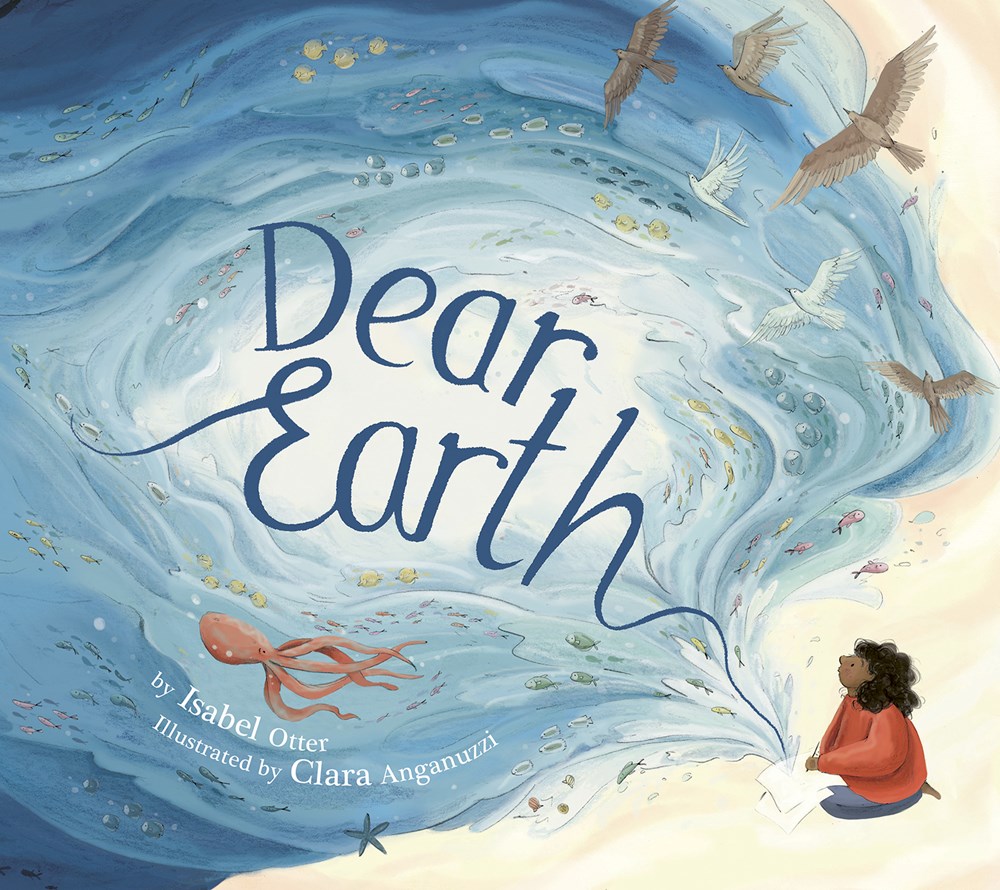 The beauty and marvels of the planet take center stage in the passionate picture book love letter Dear Earth by Isabel Otter (Tiger Tales, $18.99, ages 3-7). Accompanied by Clara Anganuzzi's dramatic illustrations, the missive makes for a persuasive argument in favor of conservation, and a delightful way to introduce these ideas to a young audience.
The beauty and marvels of the planet take center stage in the passionate picture book love letter Dear Earth by Isabel Otter (Tiger Tales, $18.99, ages 3-7). Accompanied by Clara Anganuzzi's dramatic illustrations, the missive makes for a persuasive argument in favor of conservation, and a delightful way to introduce these ideas to a young audience.
Otter's child protagonist, Tessa, has the same wild hair, light-brown complexion and rounded figure as her grandpa, who "had been an explorer once." Tessa, inspired by Grandpa's adventures, writes a letter telling the planet about all the miraculous sights she plans to see, and all the exciting experiences she intends to savor. The letter takes the audience through different biomes portrayed in dazzling colors by Anganuzzi's inviting and beguiling art. Tessa concludes her letter by acknowledging the delicate nature of Earth. Comprehensive, accessible back matter offers young people ways to provide assistance, as well as a template so they can write a letter of their own. Otter's charming picture book shows readers the vast and awe-inspiring planet while reminding them it's up to everyone to keep it safe and habitable.
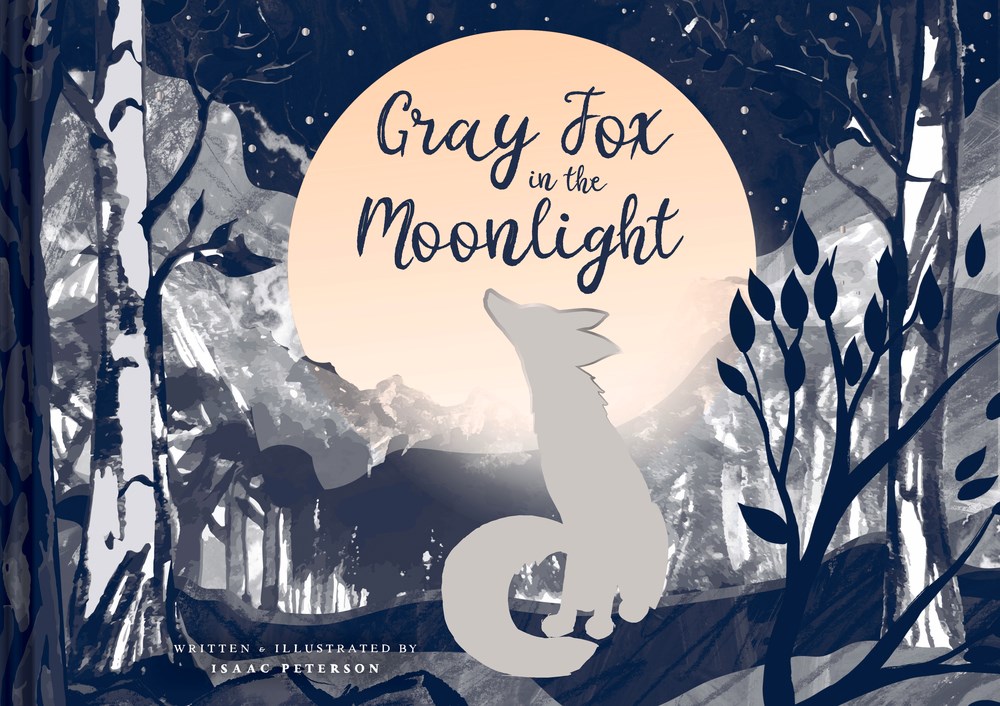 While Isaac Peterson creates the illustrations for Gray Fox in the Moonlight (The Collective Book Studio, $17.95, ages 2-8) almost entirely with grays and purples shot through with white, the variation among the images, coupled with the austere poetry in his every line of text, present a multifaceted and sumptuous nocturnal world.
While Isaac Peterson creates the illustrations for Gray Fox in the Moonlight (The Collective Book Studio, $17.95, ages 2-8) almost entirely with grays and purples shot through with white, the variation among the images, coupled with the austere poetry in his every line of text, present a multifaceted and sumptuous nocturnal world.
Peterson takes readers through a typical night in the life of the titular animal. "Gray Fox/ walks/ so lightly/ through the woods," the book begins. Soon the moon appears behind some trees, a pale orange orb seemingly "caught/ in the/ branches" and patterned with leaves. The moon and stars light Gray Fox's way as she approaches a river and examines her reflection. Moonlight also helps her follow a twisty path back to her den, "where/ her kits/ are/ dreaming." Gray Fox curls around them, moonlight-kissed feathery-leaved plants standing sentry. Gray Fox in the Moonlight is a book tied to no era, which perfectly suits a timeless hymn to the natural world and to parents' love for their children.
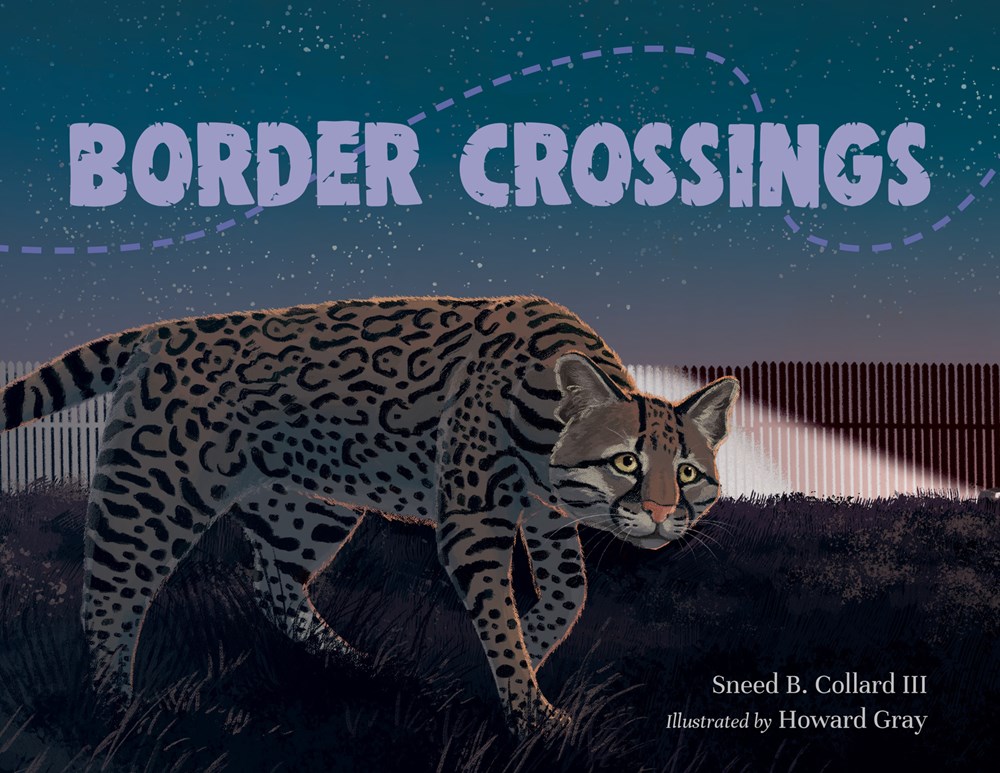 Author Sneed B. Collard III and illustrator Howard Gray present with conviction and a keen reverence for biodiversity the threat to animals and plants posed by the U.S./Mexico border wall in Border Crossings (Charlesbridge, $17.99, ages 6-9).
Author Sneed B. Collard III and illustrator Howard Gray present with conviction and a keen reverence for biodiversity the threat to animals and plants posed by the U.S./Mexico border wall in Border Crossings (Charlesbridge, $17.99, ages 6-9).
The border wall runs nearly 2,000 miles between the United States and Mexico, threatening the survival of creatures portrayed by Gray, including pronghorn, javelinas, and pygmy-owls. Collard refers to the wall as an "ugly scar," and Gray, who precisely captures the flora and fauna of the border lands, depicts in several spreads the wall's jagged edges interrupting sky and land. The book closes with a glossary, tips for further reading, and an author's note that provides more details, stressing the only way to protect the region and its treasures: "by letting others know that we care."
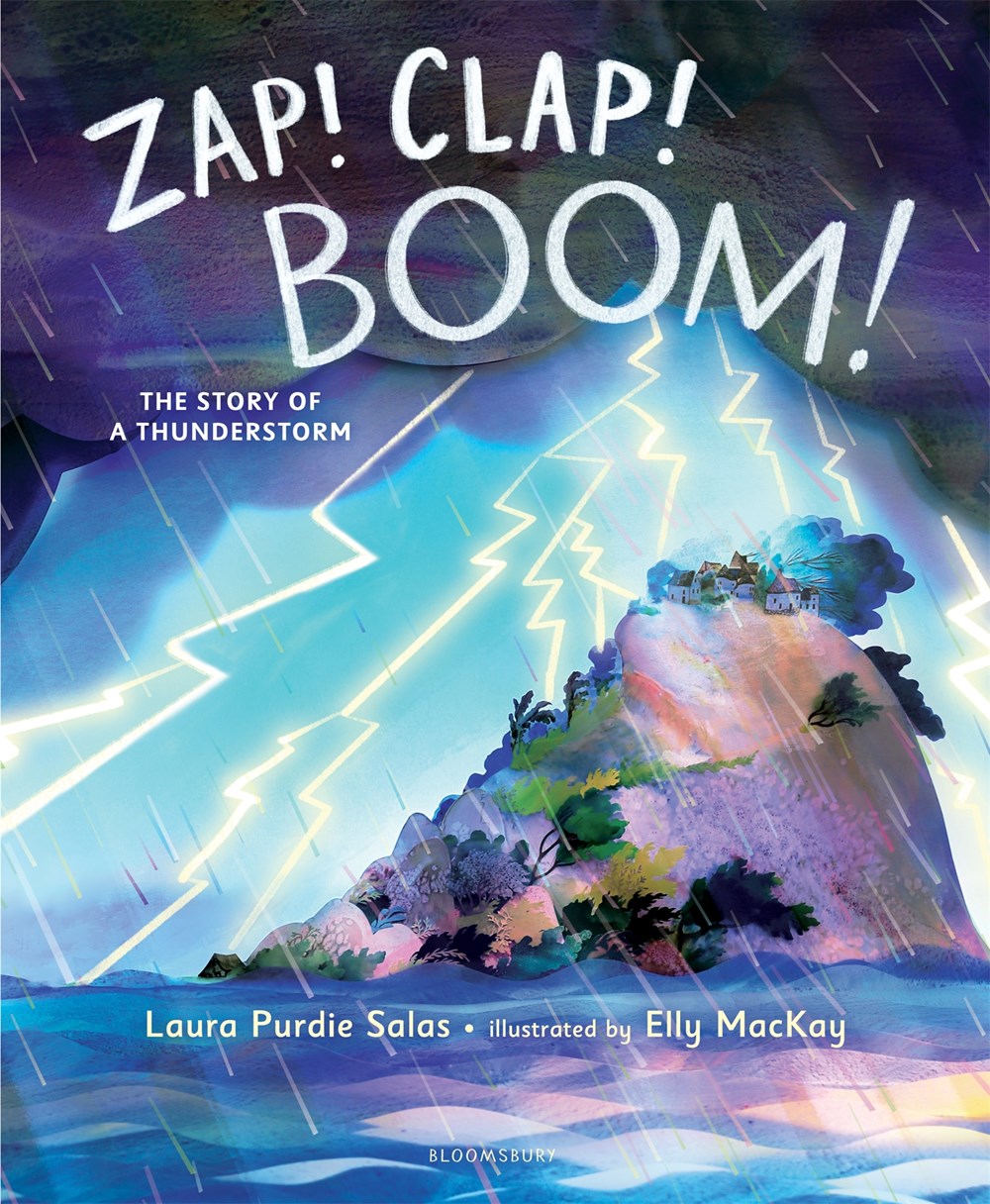 Bam! Science collides with poetry in Zap! Clap! Boom! (Bloomsbury Children's Books, $18.99, ages 3-6), in which Laura Purdie Salas's pit-a-pat rhymes match the tempo of a rain shower, and Elly MacKay's art rivals the drama of a real atmospheric disturbance. At first, three kids haven't a care as they kick a ball outside their home: "Sunny day sits warm and dry./ No wind,/ no rain,/ no stormy sky." The rhymes proceed, and the trio plays until they notice the clouds. Before long it's "ZAP! CLAP! BOOM!" The kids make a run for it, but too late! "Swollen clouds begin to drain,/ spilling/ splashing,/ chilling/ rain."
Bam! Science collides with poetry in Zap! Clap! Boom! (Bloomsbury Children's Books, $18.99, ages 3-6), in which Laura Purdie Salas's pit-a-pat rhymes match the tempo of a rain shower, and Elly MacKay's art rivals the drama of a real atmospheric disturbance. At first, three kids haven't a care as they kick a ball outside their home: "Sunny day sits warm and dry./ No wind,/ no rain,/ no stormy sky." The rhymes proceed, and the trio plays until they notice the clouds. Before long it's "ZAP! CLAP! BOOM!" The kids make a run for it, but too late! "Swollen clouds begin to drain,/ spilling/ splashing,/ chilling/ rain."
As the weather intensifies, so do the book's language and art. Salas imbues the stormy scene with a Halloweeny menace; MacKay uses bruise-like purples and blues to capture nature at its fiercest. MacKay builds texturally enticing tableaux that readers will want to reach out and touch... except, perhaps, when the storm is meanest. Then readers may wish they could be with the three kids enjoying the natural world through a window.
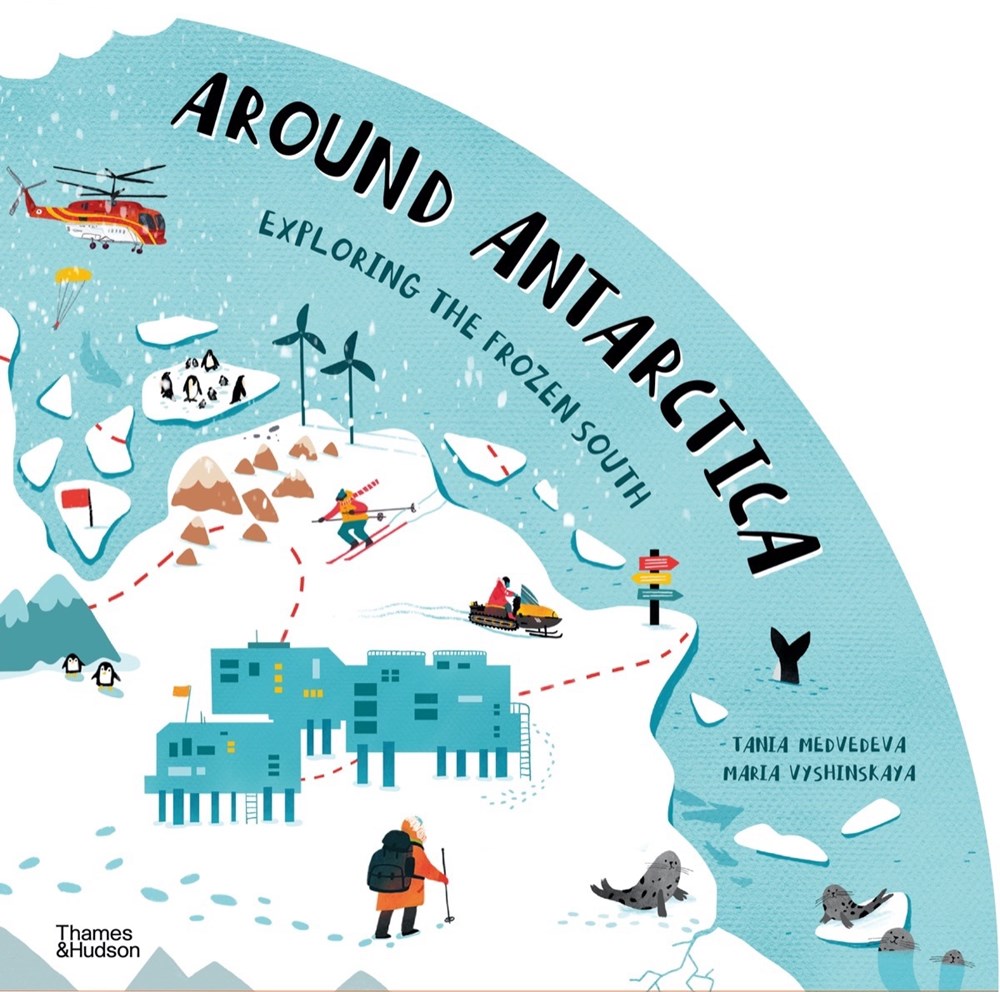 Author Tania Medvedeva and artist Maria Vyshinskaya's wonderfully informative, beautifully designed long-form picture book Around Antarctica: Exploring the Frozen South (Thames & Hudson, $27.95, ages 7-10) follows Tom, a "top-notch journalist," as he joins an expedition to visit a research station in Antarctica. A trip to this "mysterious frozen continent" requires warm clothes, but no visa because "Antarctica doesn't belong to any country." There's no military presence or mining, but there is a cooperative world research center, where "scientists from different countries share their research plans and results." Upon arrival, Tom learns rules designed to keep visitors safe, how the center itself functions, and about different kinds of scientific research taking place. Meteorologists study the earth's atmosphere and ozone layer; a glaciologist and her team inspect ice samples; the oceanologists analyze Antarctica's unique waters; and there are scientists who investigate the "more than 20,000 species of living things" that can be found here.
Author Tania Medvedeva and artist Maria Vyshinskaya's wonderfully informative, beautifully designed long-form picture book Around Antarctica: Exploring the Frozen South (Thames & Hudson, $27.95, ages 7-10) follows Tom, a "top-notch journalist," as he joins an expedition to visit a research station in Antarctica. A trip to this "mysterious frozen continent" requires warm clothes, but no visa because "Antarctica doesn't belong to any country." There's no military presence or mining, but there is a cooperative world research center, where "scientists from different countries share their research plans and results." Upon arrival, Tom learns rules designed to keep visitors safe, how the center itself functions, and about different kinds of scientific research taking place. Meteorologists study the earth's atmosphere and ozone layer; a glaciologist and her team inspect ice samples; the oceanologists analyze Antarctica's unique waters; and there are scientists who investigate the "more than 20,000 species of living things" that can be found here.
Reporter Tom's experience provides a continuity that allows Medvedeva to frame her work as a story while packing it with wide-ranging yet pertinent information. The detailed, colorful illustrations enhance and augment the informative yet playful text and interactive nature of the book's design: a quarter-circle format that opens into a hemisphere with several gatefolds that open into full circles. Around Antarctica strongly conveys the usefulness in studying the area, as well as the need to protect it because, as Tom ultimately realizes, our entire planet is "a single organism. Beautiful, strange, mighty, harsh, fragile... and every action we take affects it." --Siân Gaetano, children's and YA editor, Shelf Awareness
Book Candy
Book Candy
CrimeReads previewed "the best new crime shows coming out in April."
---
"Listen to The Epic of Gilgamesh being read in its original ancient language, Akkadian," courtesy of Open Culture.
---
John Speed's "market-fresh copy of the first world atlas compiled by an Englishman" sold for £33,750 ($41,580) at Chiswick Auctions, Fine Books & Collections reported.
---
New Columbia, Md., Public Library "will offer visitors a unique, green climbable façade," Design Taxi reported.
Discover Great Publishers
Spotlight on IDW Publishing
 |
|
| Stephen Graham Jones | |
Stephen Graham Jones is the New York Times bestselling author of nearly 30 novels, collections, novellas and comic books. Most recent are My Heart is a Chainsaw and The Babysitter Lives. Jones spoke with Shelf about his new comic book series, Earthdivers, and what it has been like to move from novel to comic storytelling.
By the second page of the first Earthdivers, the premise is clear: a character is going back in time to kill Christopher Columbus. Would you tell readers a little bit about this graphic novel series?
What American Indian doesn't want to go back, keep us from getting "discovered," called the wrong name, then infected and enslaved and massacred over and over? Columbus wasn't around for the long history of bad relations and worse people, but there is the sense that--like Custer and the Black Hills--he's the one who kicked the door open. The dream is to go back, do away with him, but wouldn't it also be great to get to go back and show him that it didn't work? That, despite all the concentrated efforts, we're still here and creating comic books? That'd be great to throw in his face. And then get to the rest of the... mission.
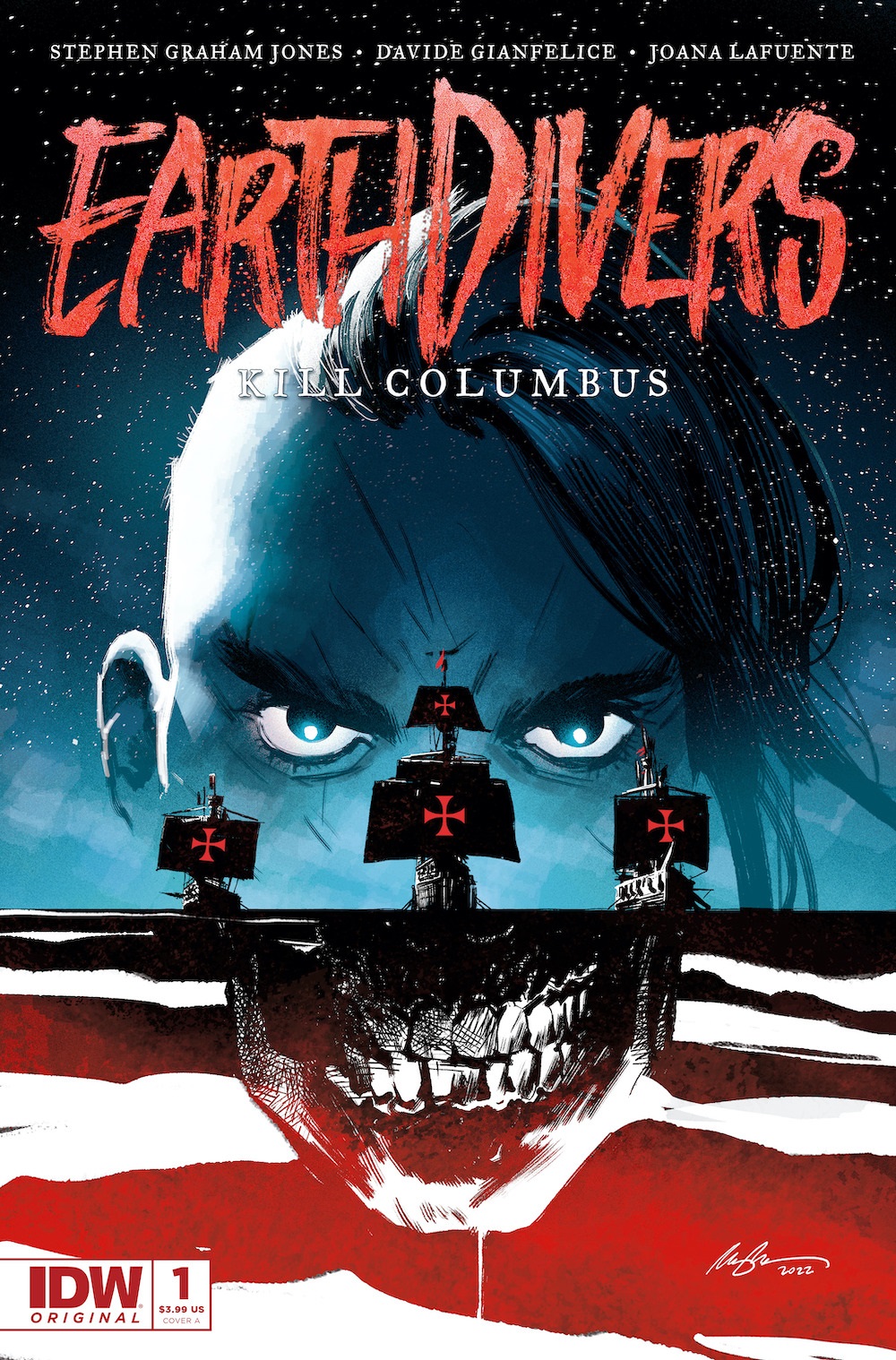 Have you always wanted to write graphic novels?
Have you always wanted to write graphic novels?
Yeah, comic books have been where it's at for me since I was 12 years old and stumbled upon Secret Wars #4 in a rural gas station. I love the form, the grammar and syntax of pages and panels and how much you can do with and in a comic book. If when I was starting out I had an inroad to comic booking, I wonder if I ever would have written prose fiction. I love prose fiction--I live in those rhythms, those possibilities. But if I'd taken a sidestep into comic books and had some luck there? I honestly don't know. I'm fortunate to be getting to do both, now. I love prose fiction and I love comic books. I also love music, but no worries--complete lack of talent's going to keep me from playing in that field.
How was it switching to writing graphic novels? Do you prefer writing one over the other?
It's harder because, for each issue, there's a finite number of pages, and of course you have to stage things on page-turns, and then set up and get out of two-page spreads... It's fantastically fun, but it means I have to plan--I have to figure out beforehand what's going to fit, where it's going to turn and how it's going to end. That's completely opposite to the way I write. Juggling captions and dialogue, tiers and panels, that comes naturally. I've been living in the comic book page so long that it's second nature, moving like that. It's about 14th nature having to outline, though. Maybe 22nd, even.
The illustrations are fabulous. What was your experience with the art?
Davide's character sketches completely changed the development and direction of the comic book before we even got it going. So, from the get-go, his art has been vital. But what's amazing is working with someone with a visual sense, an ability to make layouts dynamic, an instinct for expression with nothing but lines. My favorite parts of this process have been when his art erases some of my words. Then I can scrub them from the script because they're, in the sense that matters, already there. It's been a magical process.
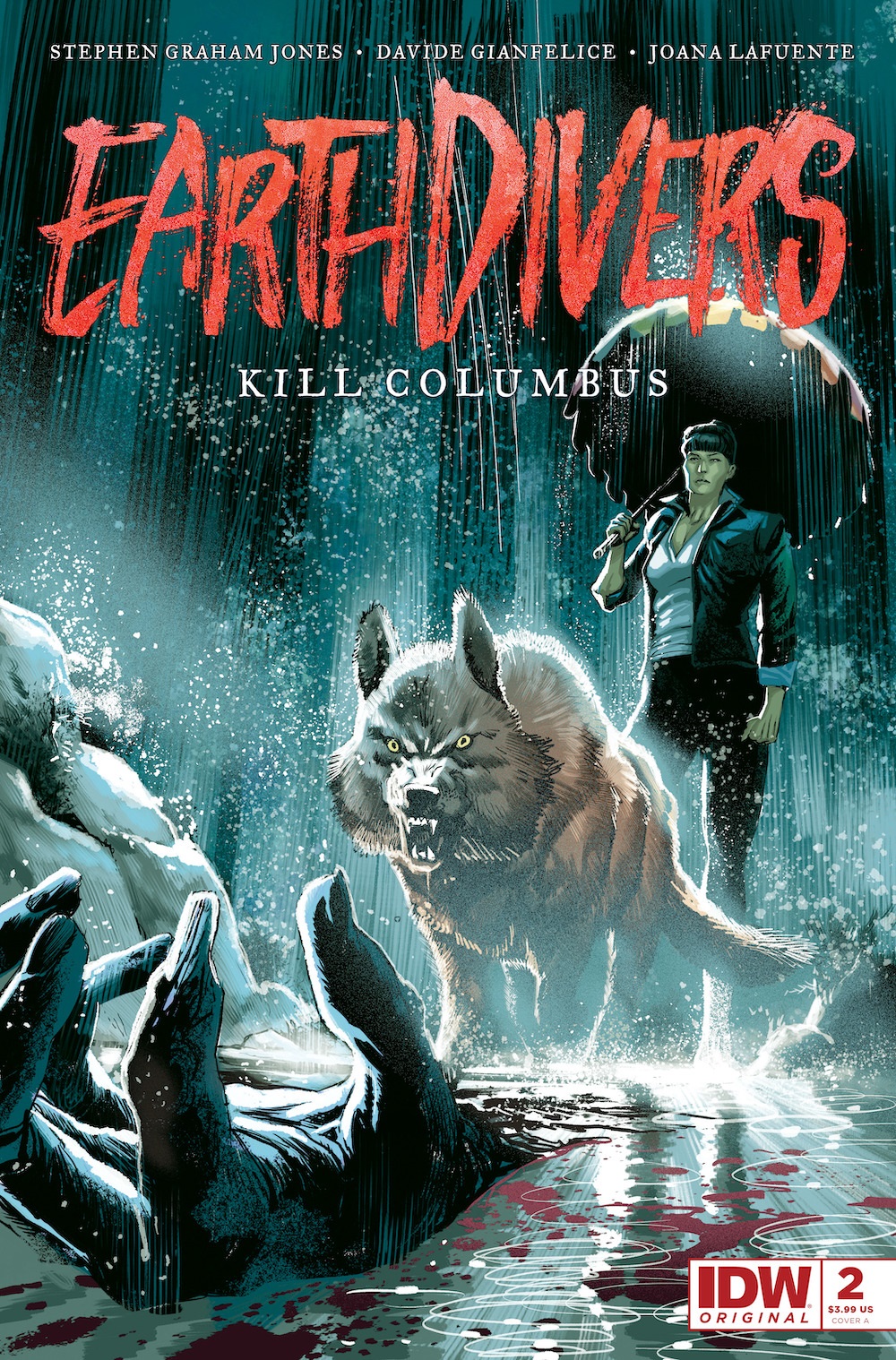 What is the publication schedule for this series? Is it following a comics model or a traditional publishing model?
What is the publication schedule for this series? Is it following a comics model or a traditional publishing model?
Comics model: monthly, arc by arc. Which is another thing I'm having to learn: how to arc a character episodically, rather than giving them this long on-ramp to change and discovery. Serial storytelling is completely different. It's both liberating and confining, but in good ways. It's making me grow as a writer, and that's been a wonderful and surprising gift.
Is there anything else you'd like to tell Shelf readers?
I actually did research for this story. And I usually research nothing. I figure if I can't convince the reader of this lie, then I'm not writing well enough. I'd much rather make a fact up than find one that corresponds to the world. But, due to the historical nature of this, I had to choreograph with the actual first voyage in 1492. It was revealing how much of it is still guesswork--we're not even completely sure what language Columbus spoke. But, for that language? One of my sisters has a graduate degree in linguistics. I was able to call her up every time I hit that language wall, and needed some insight that... I probably should have researched myself. But research is so not-fun. This kind of research, though? I get to talk to my sister. That's the kind of research I like.
Exciting 2023 Titles from IDW
Keep an eye out for these upcoming books from IDW:
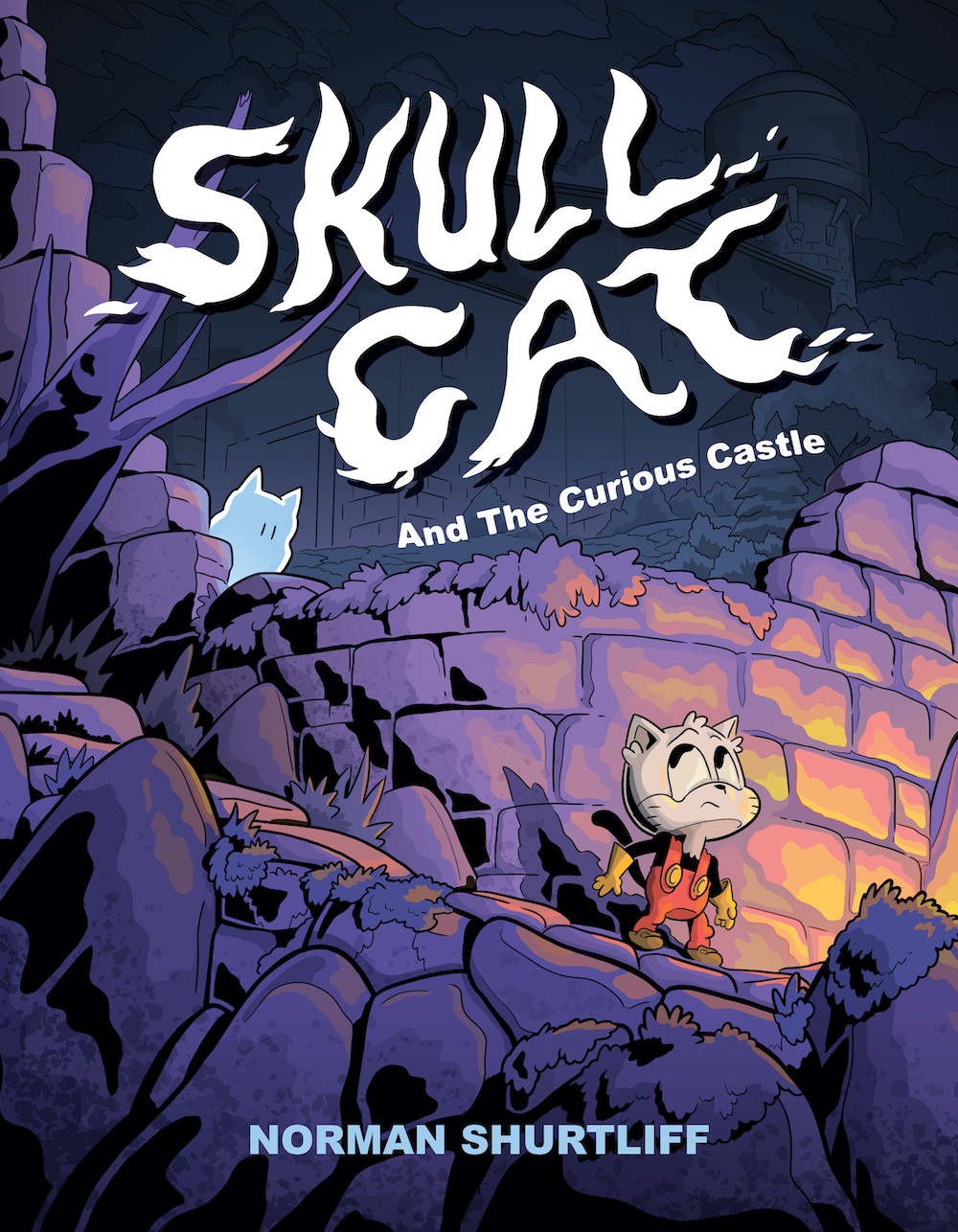 Skull Cat (Book One): Skull Cat and the Curious Castle by Norman Shurtliff (Top Shelf Productions, $14.99 paperback, 112p., ages 9-12, 9781603095198, February 14, 2023)
Skull Cat (Book One): Skull Cat and the Curious Castle by Norman Shurtliff (Top Shelf Productions, $14.99 paperback, 112p., ages 9-12, 9781603095198, February 14, 2023)
It's Scully the Cat's first day at Le Dark Chateau and, even though the castle is eerie and full of dark secrets, Scully is excited to start his new job and prove himself to be a great gardener. But what happened to all his co-workers...? Scully must become the hero to uncover the truth. Middle-grade lovers of fantasy and spooky adventure should treasure Norman Shurtliff's debut graphic novel.
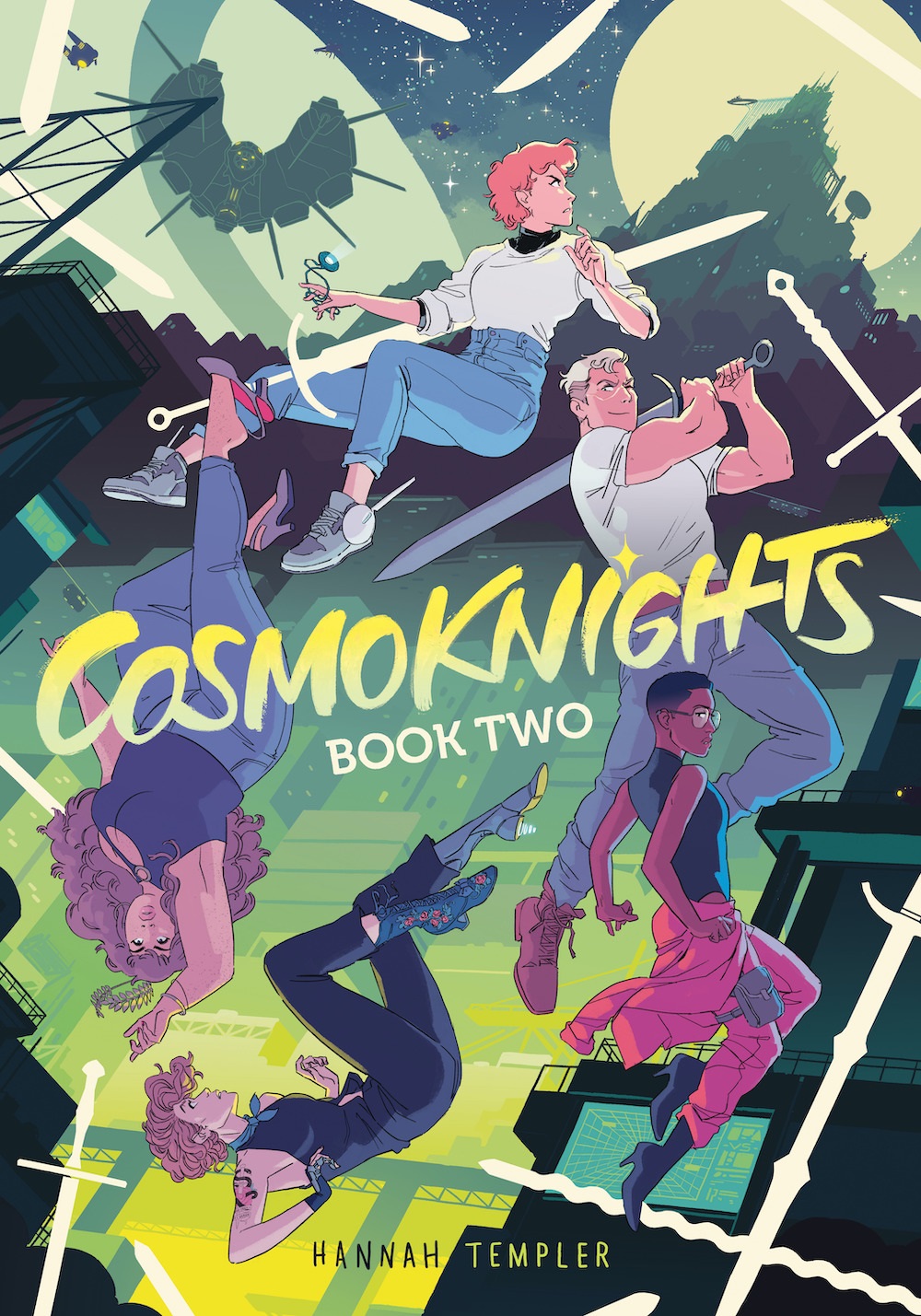 Cosmoknights (Book Two) by Hannah Templer (Top Shelf Productions, $24.99 paperback, 264p., 9781603095112, May 2, 2023)
Cosmoknights (Book Two) by Hannah Templer (Top Shelf Productions, $24.99 paperback, 264p., 9781603095112, May 2, 2023)
Pan has finally escaped her dead-end planet, piecing together a new sort of family with the rebel gladiators Bee and Cass and the mysterious hacktivist Kate. The sensational "gays in space" webcomic/graphic novel returns with new faces, long-awaited reunions, higher stakes and more thrilling action! Hannah Templer's Cosmoknights follows a ragtag group of queer outer-space gladiators as they fight to escape--and possibly overthrow--the neo-medieval patriarchy that rules their universe.
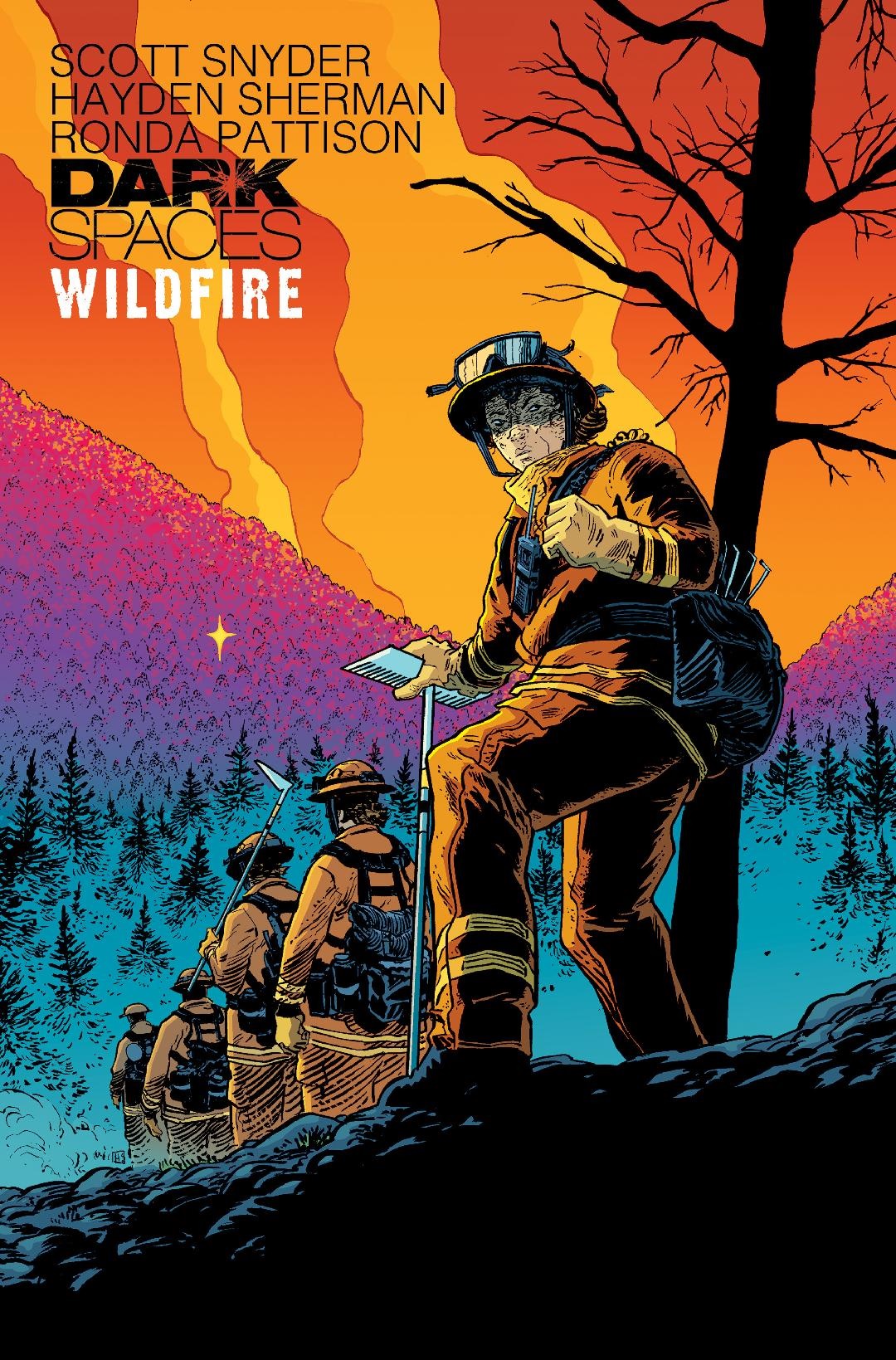 Dark Spaces: Wildfire by Scott Snyder, illus. by Hayden Sherman (IDW Publishing, $14.99 paperback, 144p., 9781684059614, May 9, 2023)
Dark Spaces: Wildfire by Scott Snyder, illus. by Hayden Sherman (IDW Publishing, $14.99 paperback, 144p., 9781684059614, May 9, 2023)
Dark Spaces is a thrilling new anthology series that explores humanity's deepest fears, beginning in the smoldering hills of California. Six weeks into the burn of the Arroyo Fire, a crew of women from an inmate firefighting program work the frontlines. Their newest recruit proposes a plan to abandon their duties and hunt for riches, and the team must decide if they're ready to jeopardize their sure path back to normalcy for a shot at a life-changing score. Scott Snyder and artist Hayden Sherman craft an unforgettable heist for a new age in Dark Spaces: Wildfire.
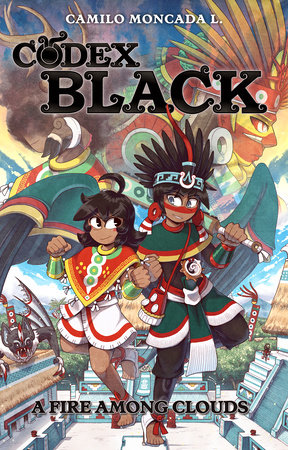 Codex Black (Book One): A Fire Among Clouds by Camilo Moncada Lozano, colorist Angel De Santiago (IDW Publishing, $16.99 paperback, 320p., ages 13-17, April 4, 2023)
Codex Black (Book One): A Fire Among Clouds by Camilo Moncada Lozano, colorist Angel De Santiago (IDW Publishing, $16.99 paperback, 320p., ages 13-17, April 4, 2023)
Navigate through monsters, mysteries, and the will of the gods with two young extraordinary adventurers in fifteenth-century Mesoamerica as they search for a missing father. Donají is a fearless Zapotec girl who, even though she's only fifteen, is heralded as a hero by her village. In Codex Black, Donají sets out on an adventure--accompanied by the god that lives inside of her poncho--to find her missing father. Along the way, she meets a 17-year-old winged Mexica warrior named Itzcacalotl, and over time their temporary partnership blooms into an incredible friendship.
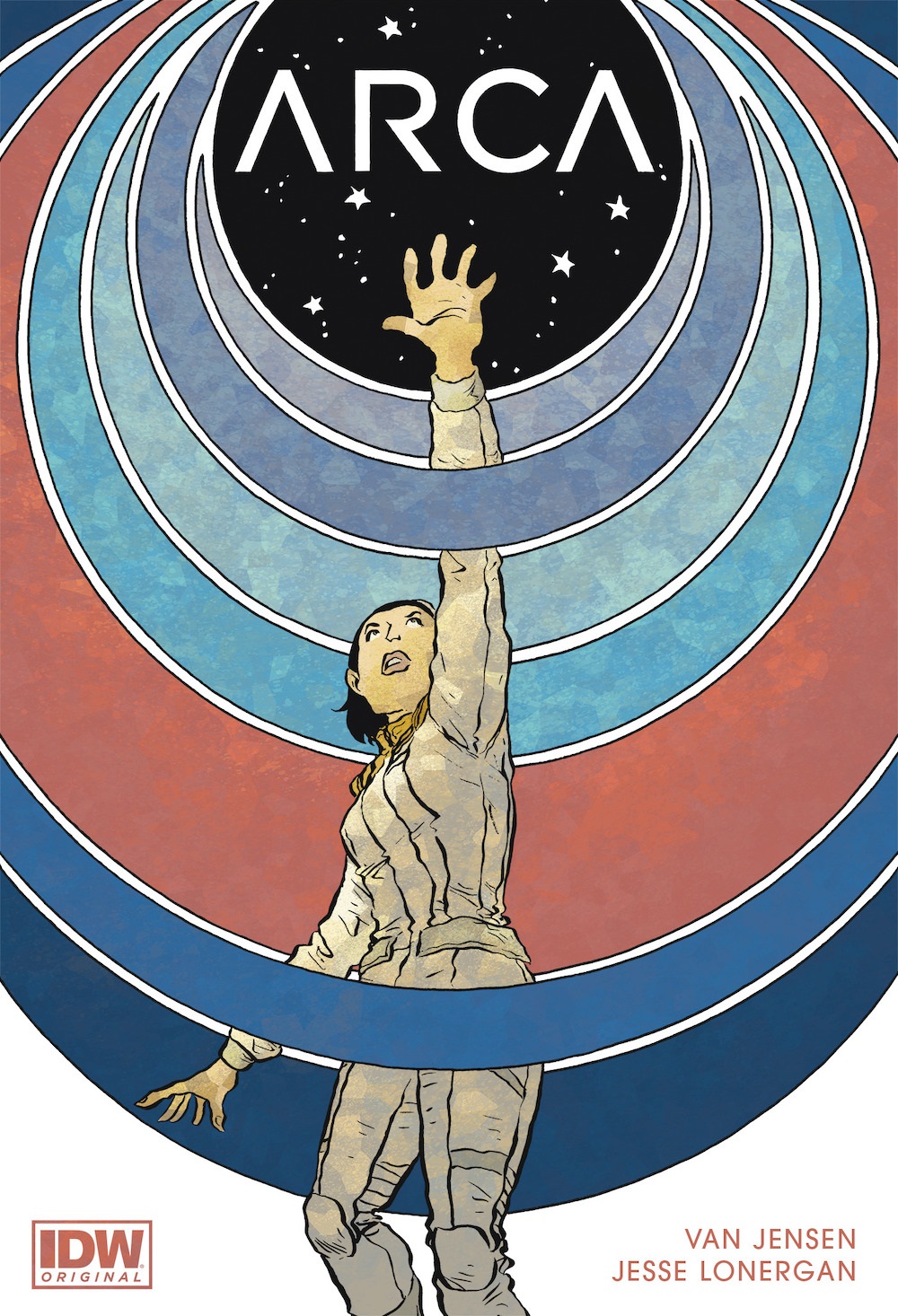 Arca by Van Jensen, illus. by Jesse Lonergan (IDW Publishing, $16.99 paperback, 176p., 9781684059980, July 11, 2023)
Arca by Van Jensen, illus. by Jesse Lonergan (IDW Publishing, $16.99 paperback, 176p., 9781684059980, July 11, 2023)
The world burned. But the rich and powerful had a plan. When society fell apart, a select group of billionaires had an escape hatch: a rocket aimed at the nearest habitable planet and a ship equipped with many of the luxuries of life on Earth. Their every need is tended to by enslaved teenagers who agreed to the role in return for the promise of a new life. However, inside a sealed chamber a teenager named Persephone discovers that the promised future of comfort is a myth. With that knowledge she fights for her survival against the billionaires who would gladly kill her to protect the hidden truth.
Rediscover
Rediscover: Anne Perry
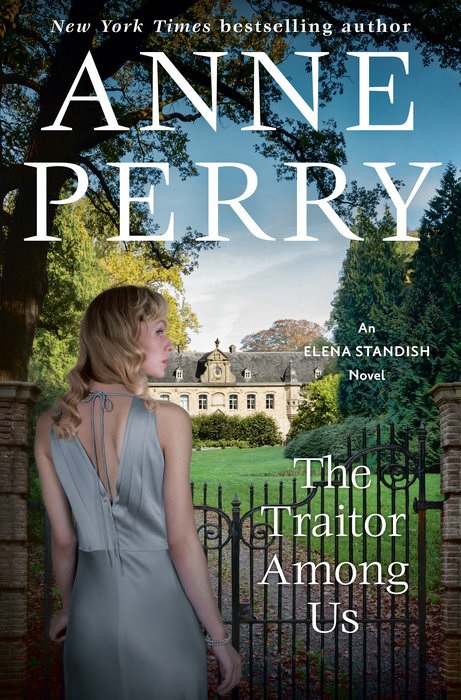 Anne Perry, author of more than 100 novels that have sold more than 26 million copies worldwide, a "crime writer with her own dark tale," as the New York Times put it, died on April 10 at age 84. Born in London, England, Perry spent part of her childhood in New Zealand, where at age 15, then named Juliet Hulme, she was at the center of a grisly homicide. She and her best friend murdered the best friend's mother in an attempt somehow to keep the girls together as Perry's parents were separating and about to send Perry abroad. The two went to prison for five years, were given new identities and instructed never to meet again under penalty of life imprisonment.
Anne Perry, author of more than 100 novels that have sold more than 26 million copies worldwide, a "crime writer with her own dark tale," as the New York Times put it, died on April 10 at age 84. Born in London, England, Perry spent part of her childhood in New Zealand, where at age 15, then named Juliet Hulme, she was at the center of a grisly homicide. She and her best friend murdered the best friend's mother in an attempt somehow to keep the girls together as Perry's parents were separating and about to send Perry abroad. The two went to prison for five years, were given new identities and instructed never to meet again under penalty of life imprisonment.
Perry's work included two suspense series set in Victorian England: the William Monk novels and the Charlotte and Thomas Pitt novels. She also wrote a series of books featuring Charlotte and Thomas Pitt's son, Daniel, as well as the Elena Standish series, set during World War I, 19 Christmas holiday novellas, a historical novel, The Sheen on the Silk, set in the Byzantine Empire, and short stories. Her most recent novel is The Traitor Among Us, the fifth installment in the Elena Standish series, to be published in September.
"Perry's criminal past was revealed publicly in the summer of 1994 when word leaked out that Peter Jackson would recount her story in his forthcoming film Heavenly Creatures, starring Kate Winslet as the smugly confident teenage girl who later changed her name to Anne Perry and Melanie Lynskey as her sullen and insecure classmate Pauline," the Times wrote. When her past became public, Perry acknowledged the crime, saying "she had been afraid that if she did not go along with the murder plan, her distraught friend might kill herself."
Ballantine Books, her publisher for more than two decades, said her work is noted for "memorable characters, historical accuracy, and exploration of social and ethical issues." In 2000, she won an Edgar Award for her short story "Heroes." She also won the Premio de Honor Aragón Negro in 2015, was selected by the Times of London as one of the 20th century's 100 Masters of Crime, and twice was guest of honor at Bouchercon.
Perry's agents Donald Maass and Meg Davis said, "Anne was a loyal and loving friend, and her writing was driven by her fierce commitment to raising awareness around social injustice. Many readers have been moved by her empathy for people backed into impossible situations or overwhelmed by the difficulties of life. Her characters inspired much love among her fans and comforted many readers who were going through tough times themselves."
In Interiors, a 2009 documentary about Perry, she said, "In a sense it's not a matter--at the end--of judging. I did this much good and that much bad. Which is the greater?... It's who you are when time's up that matters."



